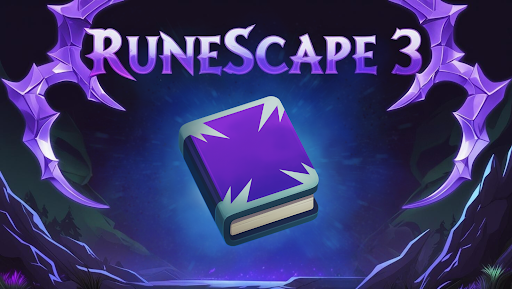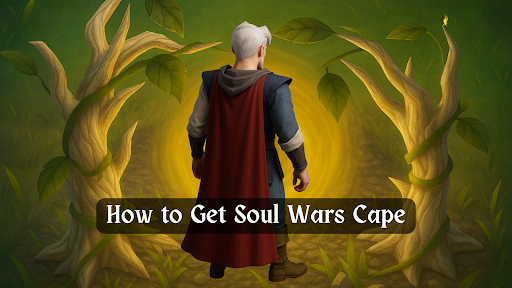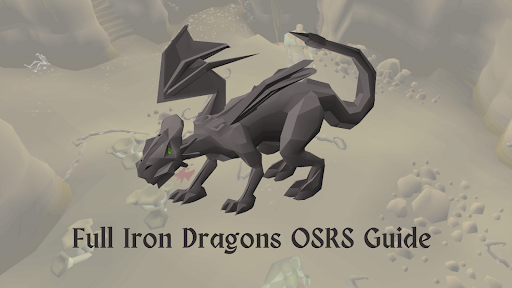Avarage Rating
RuneScape 3 Necromancy Guide (1–120)
Necromancy in RS3 is a unique and powerful combat and skilling hybrid that allows players to wield the energies of death itself. With its own set of weapons, armor, rituals, and progression mechanics, necromancy RS3 brings a fresh and engaging experience for both new and veteran players. This guide walks you through how to train the skill from level 1 to 120, covering both combat and non-combat methods, including optimal training paths, gear upgrades, potion usage, and how to complete the related quests. Whether you’re chasing the necromancy cape or just exploring the content, this guide gives you a fast and smart leveling route.
Want similar combat on custom worlds? Check our RuneScape private server list for RSPS options.

Getting Started
Before you begin necromancy training RS3, you’ll need to complete the starting quest: "The Spirit of War". This unlocks the ritual site, combat spells, and core systems required to begin gaining experience. You’ll be introduced to necromancy gear, including the Death Guard and Skull Lantern, and basic rituals such as Communion. You'll also gain access to the Well of Souls, which is central to progression.
Training necromancy RS3 starts with basic combat, but you’ll quickly branch into rituals for non-combat XP. Make sure to collect raw materials like ectoplasm, ashes, and ritual candles early on. These are foundational to both fast leveling and cost-efficient training. A good starting goal is to reach level 20 quickly through combat, then unlock better rituals to supplement your training rate.
Necromancy Abilities and Mechanics
The Necromancy combat style in RS3 is a unique and powerful system that operates independently from traditional Magic or Ranged. Instead of relying on elemental spells or arrows, necromancers harness spirit damage, soul siphoning, and conjured minions to overwhelm enemies. Understanding how its mechanics work is key to mastering the skill and maximizing your damage output. This RS3 necromancy guide breaks down the key features.
- Basic Abilities. These build adrenaline. Abilities like Finger of Death and Touch of Death are fast hitters that scale with your gear.
- Thresholds and Ultimates. Use Soul Strike and Command Undead to trigger high damage rotations. Conjure Vengeful Ghost and Conjure Putrid Zombie bring out minions that assist in combat.
- Conjures. These are unique to necromancy. They work as a DoT (damage over time) mechanic and synergize with healing and passive effects.
- Combat Style Scaling. The skill benefits from a separate stat – Necromancy Level – which determines hit accuracy and unlocks higher-tier necromancy weapons.
This RS3 necromancy guide recommends staying familiar with the ability book and your rotation. Ability unlocks occur at set levels, not quest gates, so leveling quickly unlocks core power. If you're using Revolution, consider setting up a bar with Ghostly Grasp, Spirited Aggression, and Necrotic Barrage.
The Well of Souls and Talent Tree
As you train Necromancy, every action – whether in combat or rituals – contributes energy to the Well of Souls, a central progression system for the skill. This well fuels your talent tree, where you can spend points to unlock a variety of powerful passive and active perks. These perks enhance nearly every aspect of your gameplay, from faster XP and improved rituals to stronger conjures and increased survivability.
Investing in the talent tree early and strategically is essential if you want to maximize your efficiency. Many of the perks also synergize well with Necromancy potion RS3 usage, multiplying their benefits even further when used together.
Below are some of the most impactful unlocks you should prioritize.
- Effigy Overflow. Increases ritual output significantly.
- Soul Siphon Boost. Improves how much soul energy you earn during combat.
- Undead Legion. Boosts the effectiveness of conjured minions.
You’ll be feeding Soul Urns into the Well, which are created during rituals. To maximize efficiency, pair your training with a super necromancy potion RS3 or an extreme necromancy potion RS3, which drastically boosts your experience gains and ritual outcomes.
As your tree progresses, rituals become more rewarding, and your combat prowess improves through soul-based passives. Every perk gives a tangible benefit, making the Well of Souls one of the most important parts of RS3 necromancy training.
Rituals: Non-Combat Training
Rituals are the non-combat method of training necromancy. At key XP gaps, especially between levels 40–70, rituals offer more sustainable and low-input gains. They're AFK-friendly and highly synergistic with certain perks and potion boosts.
Before you start, it’s a good idea to equip yourself with specialized necromancy gear RS3, designed specifically for rituals. For example, Athanatos’ Focus increases your ritual outcomes, and the Ectoplasmic Mask reduces interruptions from hostile spirits. This ritual-focused necromancy gear RS3 boosts efficiency, saves time, and conserves resources throughout your training.
You’ll begin with basic rites such as Communion, which helps you stockpile spirit residue for future use. As you progress, you unlock Sacrifice, allowing you to convert lesser materials into valuable Soul Urns, and eventually Invoke Death, a powerful ritual that provides substantial XP and grants useful buffs to your conjures.
As you progress, don’t forget to upgrade the ritual site itself by unlocking more glyph slots and enhancing its components. Combining these upgrades with necromancy potions and the right necromancy gear RS3 will maximize your XP gains and make rituals a highly effective – and relaxing – training method.
Maximizing XP with rituals means minimizing disturbances. The ritual site contains glyph slots – unlock more of these to increase efficiency. Bring a necromancy potion RS3 to every session to extend duration and boost XP. At high levels, switching to super necromancy potion RS3 or extreme necromancy potion RS3 is strongly recommended.
Rituals may not be as fast as bossing, but they are a huge part of the best-in-slot Necromancy RS3 experience, especially for players seeking a low-intensity, more relaxed grind.
Training Necromancy: Leveling Guide
This necromancy leveling guide RS3 section outlines the most efficient way to progress from 1 to 120. You’ll rotate between rituals and combat training depending on XP rates, your current gear, and your available perks and potions.
Levels 1–20
Use Finger of Death on low-level mobs like cows, chickens, or trolls south of Burthorpe. This phase is quick. Dual-wield necromancy weapons RS3 – Death Guard and Skull Lantern – to maximize DPS.
Levels 20–40
Switch to Undead Pirates at Braindeath Island. They are weak to necromancy and offer solid experience rates. You can AFK necromancy RS3 here effectively using Revolution. By this point, rituals start becoming viable. Consider alternating combat with Communion rituals to build materials.
Levels 40–70
Do Ritual of the Mahjarrat and unlock higher ritual glyphs. Start casting Invoke Death rituals regularly. Supplement with combat at Fungal Mages or Abyssal Demons if you have high-level prayer/auras. Use extreme necromancy potion RS3 to double ritual XP and improve Soul Urn yield.
Levels 70–90
This is where XP rates spike. Train at Glacors, Ripper Demons, or elite dungeons like ED2 – Dragonkin Laboratory. Bring high-tier necromancy gear RS3 and rotate between Command Undead, Soul Strike, and Conjure Vengeful Ghost. Don’t forget the super necromancy potion RS3 for each session.
Levels 90–120
At this stage, you’re ready to tackle the toughest bosses and highest XP rates Necromancy can offer. With your conjures, perks, and best-in-slot necromancy gear RS3, you can now focus on bossing as your primary training method. Below are recommended bosses and why they’re ideal.
Raksha, the Shadow Colossus
- Excellent for practicing sustained damage and timing ultimates.
- Rewards players who maintain conjures and avoid mechanics.
- High-value drops make it worth farming even beyond XP gains.
Zamorak, Lord of Chaos
- Multi-phase fight where Necromancy’s healing and DoTs shine.
- Requires good adrenaline and conjure management between phases.
- Strong DPS can help skip dangerous mechanics with proper timing.
Arch-Glacor
- Great for AoE damage and sustained conjure uptime.
- Customizable difficulty makes it accessible and still rewarding.
- Helps refine your rotation and reaction speed under pressure.
You can also supplement bossing with other high-level content for variety, including the options below.
- Elite Dungeons (especially ED2 – Dragonkin Laboratory) for consistent XP and loot.
- Slayer bosses like Abyssal Lords or Kerapac for steady XP and high-value drops.
- Rituals, if you prefer a more relaxed, AFK-friendly method to fill gaps in active training.
Be sure to stack extreme necromancy potions, activate Well of Souls perks, and use the full T92 necromancy gear RS3 set for peak efficiency. This approach will not only help you reach level 120 faster but also sharpen your PvM skills and earn you some of the best rewards in the game.
Use high-end RS3 necromancy weapons like T92 Deathdealer Scythe and upgraded lanterns. This gives the fastest necromancy XP RS3. If you’re not into PvM, stay at the ritual site and push Invoke Death with all glyph slots filled. At this level, rituals give high passive returns with necromancy perks RS3 from the Well of Souls active.
Optimizing Experience Gains
Maxing out XP in RS3 Necromancy comes down to proper stacking of multipliers and boosts. The more of these you can combine, the faster and more efficient your progress will be. Below is a list of the most impactful XP boosters, including the necromancy cape RS3, you should aim to use during training.
| Boost/Perk | Effect / Benefit |
| Necromancy cape RS3 | Once unlocked at 99, this gives a daily teleport to the ritual site and a passive boost to urn creation. |
| Wisdom Aura | Activate during ritual or combat sessions. |
| Super/Extreme Necromancy Potions | These stack with auras and double your XP gain for short periods. |
| Pylon Boost | During active pyramids in Senntisten, XP is boosted significantly. Always do rituals when the Pylon is active. |
| Well of Souls Perks | Unlock passive and active bonuses that improve XP rates, ritual outcomes, and conjure power. |
| Clan Avatars | If you’re in a clan with a summoned avatar, you can gain up to a +6% XP boost when near the avatar. |
| Bonus XP / Star / Lamps | Earned through Treasure Hunter, events, or dailies – applies directly to Necromancy for a temporary boost. |
| Premier Club Membership | Offers additional XP perks, such as extended auras and occasional bonus XP weekends. |
| Double XP Events | Participate in official Double XP Weekends to maximize gains. |
| Ritual Glyph Upgrades | More glyph slots = faster rituals & higher output, indirectly improving your XP rates. |
AFK necromancy RS3 is more viable during rituals or at passive combat training spots like abyssal creatures or corrupted creatures in the Sophanem Slayer Dungeon. Set your bar to a semi-passive rotation and use sign-of-life effects.
Want the best in slot necromancy RS3 routine? Use full t90 necromancy armor RS3, switch to T92 during bosses, boost with extreme necromancy potion RS3, and rotate between combat and Invoke Death rituals depending on downtime.
Necromancy Equipment and Upgrades
Training Necromancy RS3 effectively means keeping up with the ever-improving tiers of weapons, armor, and enhancements as you level. Upgrading your gear not only boosts your damage and survivability but also unlocks new abilities and improves the efficiency of both combat and rituals. Below is the recommended Necromancy Weapons RS3 progression path, showing what to aim for at each milestone.
Necromancy Weapons RS3 Progression
- T40 Death Guard + Skull Lantern – starter set.
- T70 Deathwarden Gear – use from levels 70–80.
- T90 Deathdealer Wand + Lantern – craftable after quests and soul harvesting.
- T92 Deathdealer Scythe (2H) – best for bossing.
Necromancy Armor RS3 Upgrades
- Deathwarden Armor (T40–T90) – Upgradable at the ritual site using ectoplasm and soul materials.
- RS3 Necromancy Armor Upgrade Materials include: Enriched Ashes, Soul Shards, Ritual Components, and Ghostly Thread.
- Best in Slot Necromancy RS3 Armor – Fully upgraded Deathwarden (T90) with tank stats.
Always imbue your gear with RS3 necromancy perks from the Well of Souls. These include:
- Undead Synergy – Boosts conjure duration.
- Spectral Aggression – Improves AoE range.
- Soul Leech – Adds lifesteal mechanics.
Stay current with gear progression if you want top efficiency. Most RS3 necromancy gear is untradeable and must be upgraded through gameplay, not bought.
Quests and Lore
There’s a rich and immersive storyline behind the Necromancy quests RS3, and they’re much more than just lore – completing them is essential to unlocking the full potential of the skill. These quests progressively introduce new mechanics, abilities, conjures, and even access to better gear and rituals. As you level, make sure to complete each one as soon as it becomes available to keep your training as efficient as possible. Below are the key quests you’ll need to complete on your path to mastery.
Key Quests
- The Spirit of War – Unlocks the skill.
- Kili Row – Provides access to higher-tier rituals and better armor blueprints.
- The First Necromancer – Unlocks talent tree branches.
- Secrets of the Dead – Ties into the Soul Wars storyline and grants combat upgrades.
Each RS3 necromancy quest adds new ritual recipes, unlocks a new conjure, or improves training rates. Completing them as soon as they’re available should be a high priority.
This necromancy leveling guide RS3 recommends questing at levels 10, 40, 60, and 90 to unlock the best perks at each tier.
Advanced Combat Strategies
Once you've geared up with the best necromancy weapons RS3 offers and are wearing full necromancy armor RS3, you're ready to focus on PvM tactics that maximize damage, survivability, and XP. Here’s how to push your output higher using effective rotations, conjure management, and RS3 necromancy perks.
Combat Rotation Tips
At higher levels of Necromancy, mastering your combat bar and ability rotations is essential to unlocking the skill’s full potential. A strong setup allows you to maintain near-constant damage output, efficiently manage your conjures, and weave in healing and crowd-control effects seamlessly.
Rather than just focusing on raw damage, think of your combat bar as a synergy engine: basics generate adrenaline quickly, thresholds convert that into burst damage, and ultimates, when timed with conjure refreshes, deliver devastating area and single-target blows.
Goals for an Effective Rotation
- Maintain conjures. Keep Vengeful Ghost and Putrid Zombie active at all times. They significantly contribute to DPS, apply pressure, and can even distract enemies. Resummon them immediately if they expire.
- Weave DoTs and builders. Alternate abilities that apply spirit damage over time with those that generate large adrenaline spikes. This ensures you always have resources ready for thresholds and ultimates.
- Apply crowd control. Use abilities that root, snare, or slow enemies – particularly useful during Slayer tasks, elite dungeons, or boss add phases.
- Time ultimates wisely. Fire your ultimates immediately after refreshing conjures and reapplying DoTs so the entire damage window overlaps with your full setup.
A well-practiced rotation not only maximizes damage but also enhances survivability. High-level necromancers can sustain themselves by weaving in Soul Siphon and leveraging lifesteal from perks like Soul Leech.
Avoid relying solely on Revolution for high-end content. Instead, set up a semi-automated bar for basics and manually trigger thresholds and ultimates when the battlefield demands. This proactive approach will help you excel in both boss fights and large mob packs.
With fully upgraded Necromancy weapons (e.g., the T92 Deathdealer Scythe), your damage spikes dramatically when combined with properly managed conjures. Pair this with talent tree perks like Lingering Spirits or Undying Fury, which turn conjures into multipliers rather than just passive damage.
Finally, when training in combat, consider high-level Slayer tasks – creatures like bloodvelds are excellent targets thanks to their low defense, good drops, and synergy with Necromancy’s AoE abilities.
Bossing with Necromancy
- Raksha – Great synergy with AoE spirits.
- Zamorak, Lord of Chaos – High burst damage for phase skips.
- Arch-Glacor – Undead summons persist through transitions.
You’ll want to use extreme necromancy potion RS3 here for massive boosts to accuracy and damage. The ritual site buffs gained through repeated Invoke Death rituals can also temporarily boost your conjure strength, making boss fights easier.
Combining a maxed-out RS3 necromancy cape with high-tier weapons and armor creates optimal efficiency. Some top PvM players even opt for full AFK necromancy RS3 during Slayer tasks or minion-heavy fights and still maintain competitive DPS.
Defensive Mechanics
Necromancy offers passive lifesteal and sustain mechanics, making it very tanky at high levels. With perks like Soul Leech and the defensive traits baked into necromancy armor RS3, you can absorb damage and keep pushing through tough encounters without food.
Use Soul Siphon during rotations to drain health and keep your HP high. This effect scales based on your necromancy level and your active conjures, creating a loop of sustain that's hard to break in both Slayer and bossing content.
Necromancy Training Builds
Training necromancy RS3 from 1 to 120 is fast, dynamic, and offers flexibility across playstyles. You can train through rituals, combat, or a mix of both. For those chasing 1–99 necromancy RS3 quickly, the fastest path includes daily rituals boosted by potions and combat in high-XP areas like ED2, Abyssal Lords, and elite bosses.
| Build Path | Gear Priorities | Focus Areas | Boosts to Use | Goals |
| Combat-Focused | T90–T92 weapons & best-in-slot armor | Bossing, Slayer, Elite Dungeons | Extreme Necromancy Potions, Well perks | Necromancy Cape, fast XP, boss kills |
| Ritual Power Leveling | High-level ritual gear, glyph upgrades | Non-combat, AFK training | Super/Extreme Necromancy Potions | Ritual XP, materials, Well of Souls |
| Hybrid Efficiency | Rotate between ritual & combat sets | Balanced sessions | Both potion types + Well perks | Max XP/hr with minimal burnout |
With frequent updates, balance patches, and evolving metas, staying active on guides like the official wiki or player-run RS3 necromancy guide threads can help refine your tactics. Be sure to complete every RS3 necromancy quest and upgrade your RS3 necromancy armor with the necessary RS3 necromancy armor upgrade materials as you level.
The fastest and smartest players use a combination of perks, potion stacking, optimized gear, and strategic training areas. If you want to know how to train necromancy RS3 to max efficiently, the secret is consistency and optimization.
Whether you're chasing the RS3 necromancy cape, grinding through every RS3 necromancy quest, or pushing into the high-level bossing scene with best in slot necromancy RS3 gear, necromancy remains one of the most flexible and rewarding skills in the game.
Mastering Necromancy: Beyond 120
Reaching level 120 in Necromancy is an impressive achievement, but the journey doesn’t truly end there – in fact, that’s where some of the most rewarding content begins. Once you’ve maxed out the skill, you’ve gained access to not only the RS3 Necromancy cape but also the confidence and mastery to tackle the most challenging bosses, push your DPS to its limits, and help others in group content as a reliable and knowledgeable teammate.
Many players at this level focus on refining their rotations, experimenting with more advanced strategies, and chasing prestige kills at record speeds. One popular post-120 goal is perfecting your gear, such as acquiring the elusive T92 Deathdealer Scythe, fully upgrading all glyph slots at the ritual site, and completing every available quest tied to Necromancy to unlock even more lore and hidden perks.
Beyond personal milestones, the community aspect of high-level Necromancy becomes more engaging. Joining PvM clans and participating in team boss runs is not just about efficiency; it’s also about camaraderie, learning, and sharing your expertise with others. Your experience with abilities, conjure management, and optimized rotations makes you an asset to any group.
Events like Double XP Weekends, Pylon activations, and even clan avatar boosts are also excellent opportunities to continue stockpiling materials or leveling alt skills synergistic with Necromancy, such as Prayer and Slayer. Another advanced pursuit is the collection and creation of all ritual-based rewards, which require significant materials and planning – this gives you reasons to keep returning to the ritual site even after maxing out XP.
If you prefer a solo path, you can set challenges like completing solo hard-mode encounters of Raksha, Zamorak, or Arch-Glacor using only Necromancy, pushing your personal best kill times. This kind of goal requires not only flawless rotations and conjure management but also mastery of fight mechanics and situational awareness.
Experiment with different perk combinations from the Well of Souls, tailoring your build for survivability, burst damage, or sustained DPS depending on the fight. You can also test alternate builds, such as hybrid setups that blend Necromancy with defensive auras or hybrid rituals designed to maximize passive gains without giving up participation in combat content.
Finally, take time to appreciate the story you’ve experienced along the way. The narrative of Necromancy in RS3 ties deeply into Gielinor’s history, the Soul Wars, and the mysteries of death and undeath. The quests and lore unlocked as you progress not only deepen your connection to the game but also enhance the sense of accomplishment you feel when donning the Necromancy cape.
Whether you’re optimizing for efficiency, exploring new strategies, helping others learn the ropes, or simply enjoying the beautiful animations and atmospheric rituals, Necromancy offers a rewarding and flexible skill that continues to deliver long after you reach 120.
Embrace the journey, refine your craft, and remember – mastery is not just about numbers but about fully understanding and enjoying the power of death at your fingertips.
Comments
Add a comment
Related Articles

Soul Wars Cape
Get the Soul Wars cape with ease. See its stats, uses, bonuses, variants, features, and how to custo...

Iron Dragon OSRS Guide
Fight Iron Dragons in OSRS with key locations, gear setups, safespot strategies, and valuable drop d...

Zulrah Quick Guide: Strategy,...
Zulrah Boss Guide: Tactics, Tips, Loot Chances, and More Looking to defeat Zulrah, the serpent boss...

Be the first to give your opinion.